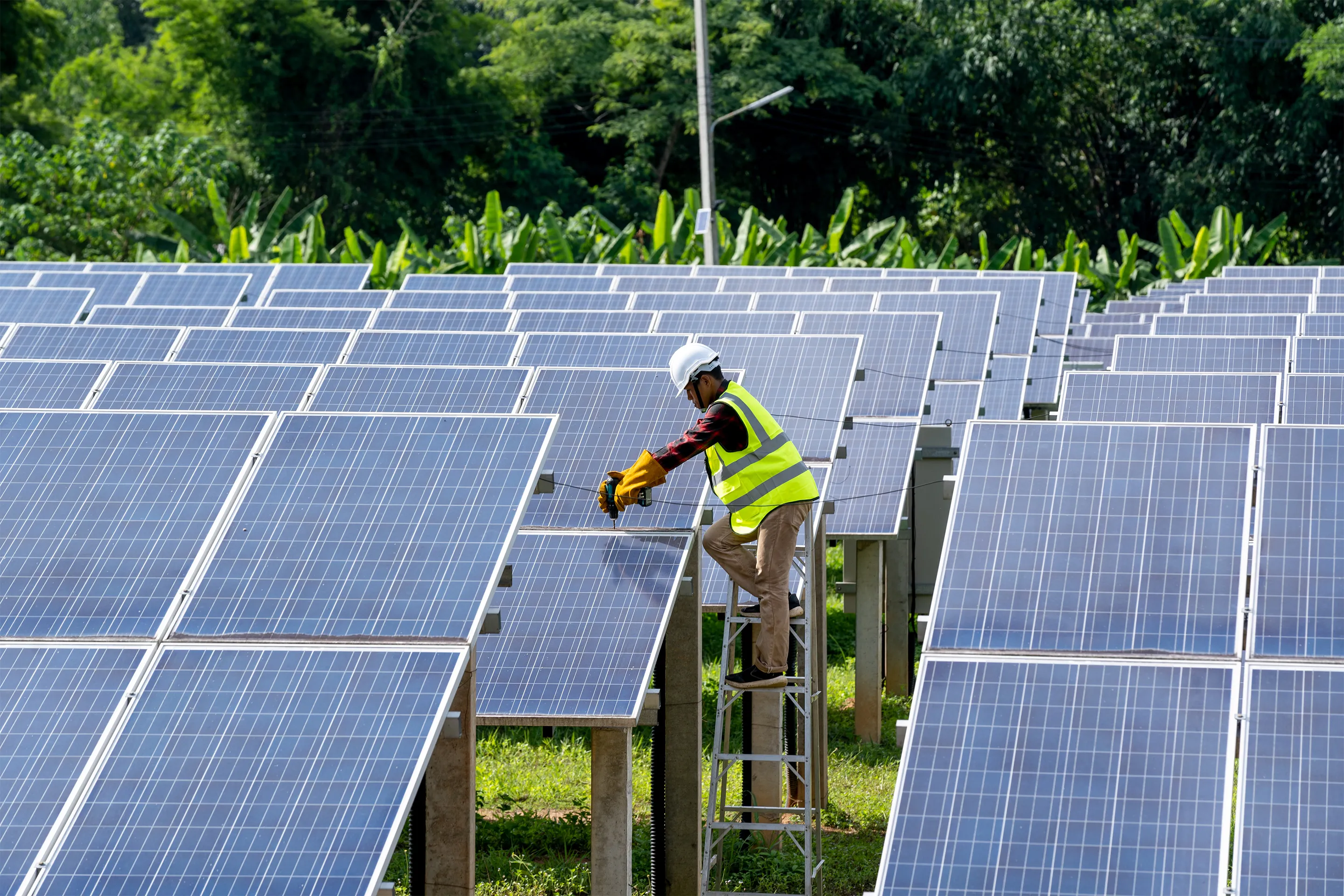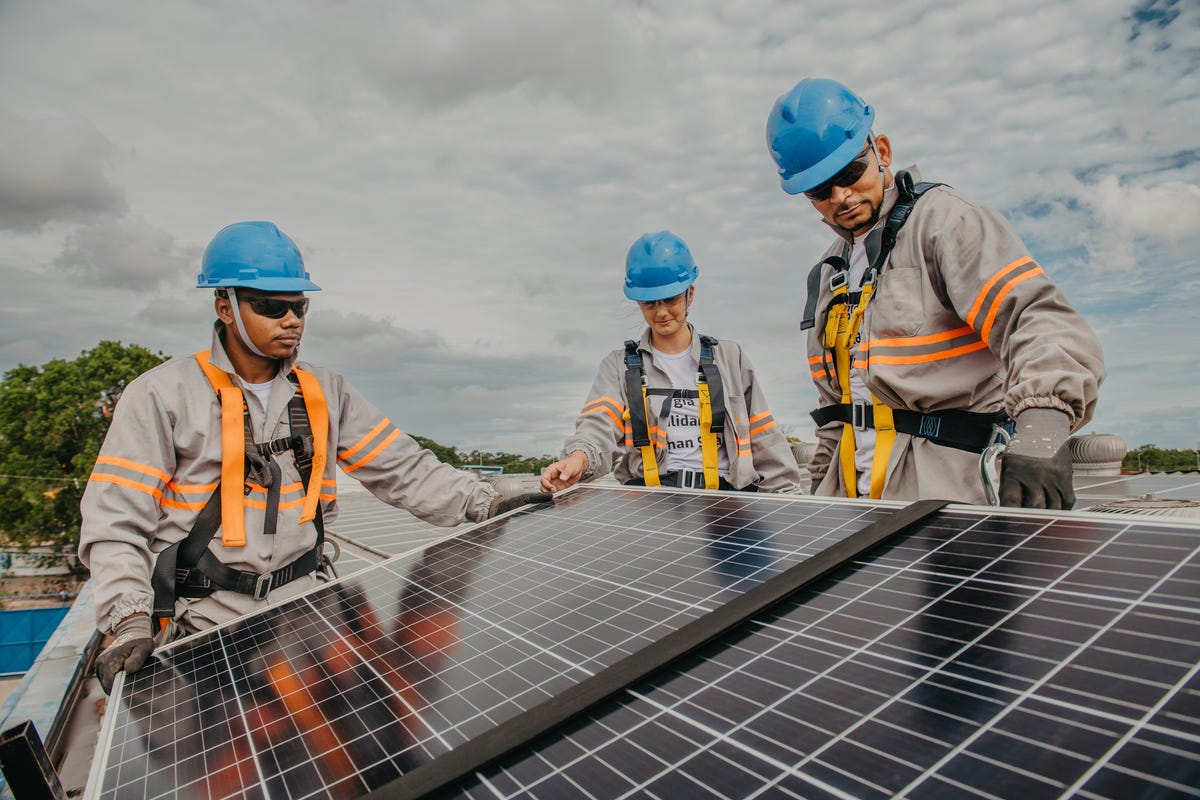Solar Panel Installation Virginia Can Be Fun For Anyone
Solar Panel Installation Virginia Can Be Fun For Anyone
Blog Article
Virginia Solar Incentives: Lumina Solar Focuses On Offering Advanced Photovoltaic Solutions For Homes And Services
History and Founding
Have you ever questioned how a photovoltaic panel company springs from a mere trigger of inspiration into a powerhouse of sustainable energy? It typically starts with a vision-- one sustained by a blend of innovation, determination, and a pinch of serendipity. The journey of lots of solar business mirrors the development of the technology itself: from large, inefficient panels to smooth, high-efficiency marvels utilizing the sun's bounty.
The Early Days
In the late 20th century, when solar power was still a niche concept, pioneers planted seeds for what would become an international motion. Imagine a little workshop filled with curious engineers, tirelessly try out solar batteries. Their passion was palpable, often driven by a desire to fight climate change and lower dependence on nonrenewable fuel sources.
One such anecdote is about a founder who, motivated by an outdoor camping journey, realized that even in remote areas, the sun could power vital devices. This easy observation triggered a business's objective to democratize access to tidy energy.
Founding Concepts

- Innovation: Constantly pressing the borders of solar technology to enhance performance and sturdiness.
- Sustainability: Committing to environmentally friendly manufacturing and reducing carbon footprints.
- Ease of access: Making sustainable energy solutions affordable and useful for everyday users.
Turning points in Development
| Year | Secret Occasion |
|---|---|
| 1985 | Company established in a little garage, focusing on research and development. |
| 1995 | Very first industrial solar panel item released, acquiring local attention. |
| 2005 | Expanded to international markets, embracing global renewable resource goals. |
| 2015 | Introduced innovative photovoltaic panel technology with enhanced energy conversion. |
Isn't it fascinating how these incremental actions, typically overlooked, form the energy landscape today? The solar panel company story is not almost technology; it's about an unrelenting mission for a brighter, cleaner future.

Innovations in Photovoltaic Panel Technologies
Ever discovered how some photovoltaic panels shine brighter and last longer? It's not magic; it's the science of photovoltaic effectiveness. Modern solar panel companies invest greatly in technologies like bifacial cells, which capture sunlight from both sides, boosting energy harvest without broadening roof space. Have you ever questioned why some panels perform better on cloudy days? That's due to advances in thin-film solar technology, which prospers under diffused light conditions.
Item Variations Customized to Distinct Needs
One size never ever fits all. Photovoltaic panel providers now provide:
- Monocrystalline panels for maximum performance and smooth aesthetics, suitable for space-constrained rooftops.
- Polycrystalline panels, which provide a cost-effective option without compromising excessive output.
- Building-integrated photovoltaics (BIPV), merging solar tech seamlessly into architectural elements like windows and facades.
Selecting the right product isn't practically upfront cost; it's about matching your environment, energy objectives, and long-term cost savings. For example, homes shaded by trees need panels that master low-light circumstances, something lots of neglect until energy expenses climb up suddenly.
Technical Tips for Optimal Choice
- Examine the temperature level coefficient-- lower values suggest panels lose less effectiveness on hot days.
- Search for panels with enhanced anti-reflective finishings to maximize light absorption.
- Consider the panel's guarantee not just for flaws, but for ensured power output over years.
- Don't underestimate the importance of the inverter technology paired with the panels; it can make or break your system's performance.
Beyond Panels: Emerging Patterns
Think of photovoltaic panels that adjust their angle instantly to go after the sun-- tracking systems are ending up being more available, increasing yield considerably. Or solar tiles that mix undetectably into your roofline, changing your home into a quiet, self-dependent power generator. These innovations are improving what a photovoltaic panel business uses-- not simply products, however incorporated energy solutions.
Market Presence and Global Operations
Ever wonder why some photovoltaic panel companies seem to grow up in every corner of the world while others hardly make a ripple? The distinction lies not simply in innovation but in mastering the art of navigating varied markets. Expanding internationally is like planting seeds in various environments-- you need to understand each environment's distinct conditions to grow.
Take, for instance, the complex dance of logistics and supply chain management. Shipping panels halfway across the world isn't simply about range; it's about timing, custom-mades, tariffs, and adapting to local demand variations. A company with robust worldwide operations anticipates these variables, ensuring panels show up on schedule without pumping up expenses. This insight is no little accomplishment and often separates industry leaders from fans.
Key Methods for Expanding Market Presence
- Localized manufacturing: Establishing production centers near target markets reduces shipping hold-ups and import complexities.
- Strategic collaborations: Collaborating with regional firms speeds up market penetration and constructs trust.
- Adaptive item style: Tailoring photovoltaic panel tech to weather, sun intensity, and infrastructure nuances boosts performance and acceptance.
What about the human aspect? Photovoltaic panel business running globally must reconcile cultural distinctions and regulatory subtleties without forgeting their core mission. What works in a sun-drenched desert might fail in a humid seaside area. In some cases, the most innovative service is just listening-- absorbing regional insights to fine-tune innovation and approach.
Specialists typically recommend a phased rollout rather than a shotgun expansion. Why risk overextension when determined click here development develops sustainable momentum? Scaling carefully suggests balancing ambition with operational resilience - Solar Companies in Virginia. In the race for sustainable energy supremacy, perseverance can be as valuable as speed.
Environmental Effect and Sustainability Practices
When solar panels initially emerged, lots of presumed they brought zero environmental luggage. Nevertheless, the reality is more nuanced. The production of photovoltaic cells involves unusual earth metals and energy-intensive processes, which can leave a large carbon footprint before the panels even reach rooftops. The true ecological cost depends greatly on the sustainability practices used by the solar panel business throughout the lifecycle of their products.
How frequently do we pause to consider what occurs to photovoltaic panels at the end of their beneficial life? Unlike batteries or electronic devices, photovoltaic panels can last 25-30 years, but disposal and recycling pathways remain underdeveloped in numerous areas. A company dedicated to decreasing environmental damage will have a robust strategy for recycling photovoltaic materials, salvaging important silicon, glass, and metals to prevent landfill build-up.
Key Sustainability Techniques
- Making use of low-impact manufacturing strategies that lessen water and energy intake.
- Implementing closed-loop systems to recycle production waste back into brand-new panels.
- Participating in transparent supply chain audits to make sure ethical sourcing of raw products.
- Designing panels for easier disassembly to help future recycling efforts.
It's worth keeping in mind that some solar companies have actually originated ingenious approaches, such as integrating biodegradable elements or using less poisonous chemicals throughout fabrication. This not just lowers environmental stress but likewise sets a precedent for the industry. The question stays: can the solar industry genuinely pivot towards a circular economy model without sacrificing performance or price?
Professional Tips for Evaluating Sustainability
- Inquire about the company's dedication to carbon-neutral manufacturing and whether they balance out emissions.
- Examine if they partner with certified recycling centers committed to solar panel waste.
- Search for transparency reports detailing environmental effects and sustainability goals.
- Consider the durability and guarantee of panels as an indirect measure of resource performance.
In the end, choosing for solar power must suggest more than simply slashing electrical energy expenses; it's about nurturing a future where energy is gathered properly and waste is attentively managed. Solar panel business that accept this philosophy not only brighten homes but likewise cast a brighter light on sustainable innovation.
Report this page